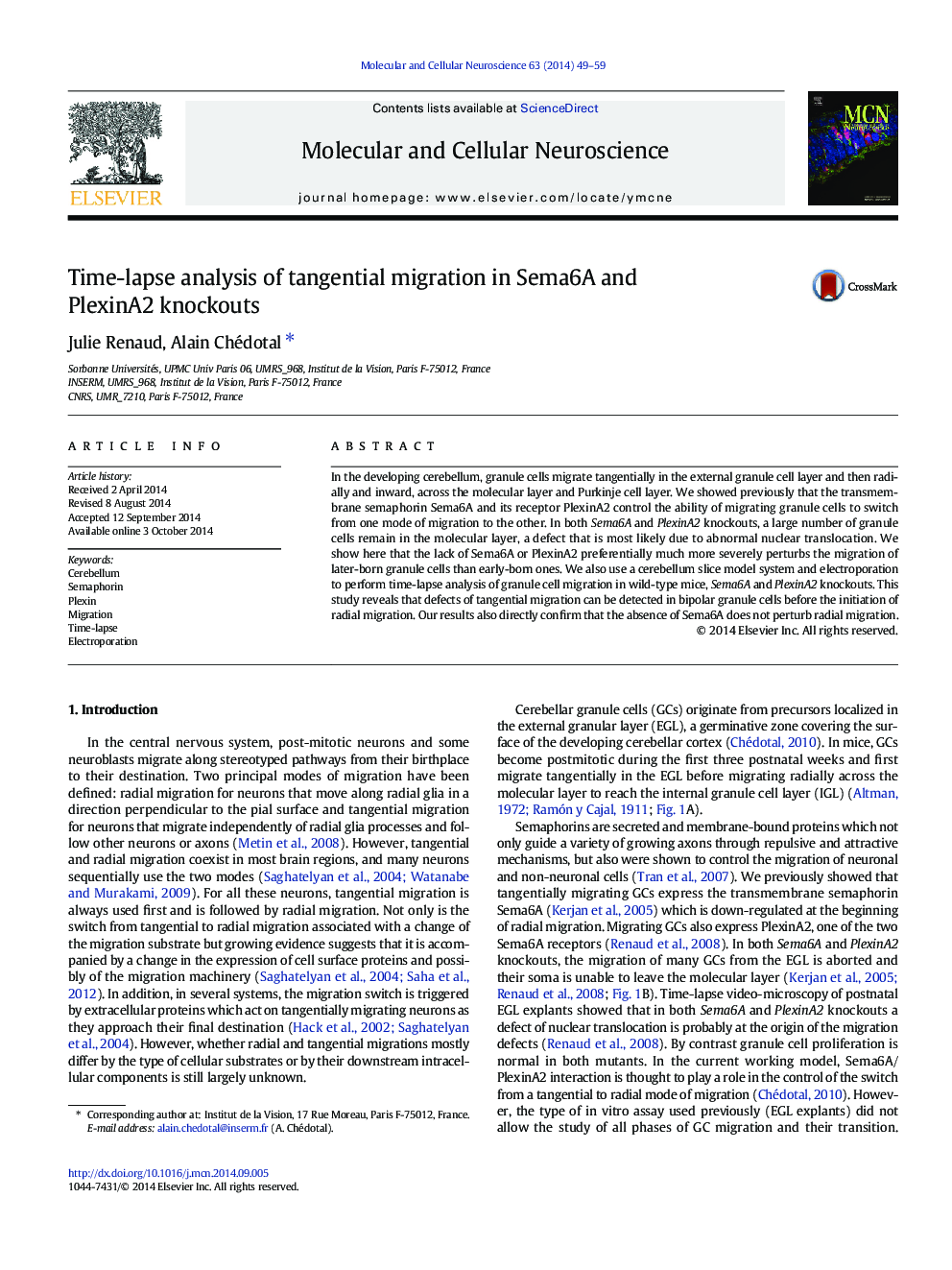| Article ID | Journal | Published Year | Pages | File Type |
|---|---|---|---|---|
| 2198458 | Molecular and Cellular Neuroscience | 2014 | 11 Pages |
•Age-dependent migration defects in the cerebellum of Sema6A/PlexinA2 knockouts•Time lapse analysis of granule cell tangential migration in semaphorin mutants•Tangential migration is selectively altered in Sema6A knockouts.
In the developing cerebellum, granule cells migrate tangentially in the external granule cell layer and then radially and inward, across the molecular layer and Purkinje cell layer. We showed previously that the transmembrane semaphorin Sema6A and its receptor PlexinA2 control the ability of migrating granule cells to switch from one mode of migration to the other. In both Sema6A and PlexinA2 knockouts, a large number of granule cells remain in the molecular layer, a defect that is most likely due to abnormal nuclear translocation. We show here that the lack of Sema6A or PlexinA2 preferentially much more severely perturbs the migration of later-born granule cells than early-born ones. We also use a cerebellum slice model system and electroporation to perform time-lapse analysis of granule cell migration in wild-type mice, Sema6A and PlexinA2 knockouts. This study reveals that defects of tangential migration can be detected in bipolar granule cells before the initiation of radial migration. Our results also directly confirm that the absence of Sema6A does not perturb radial migration.
